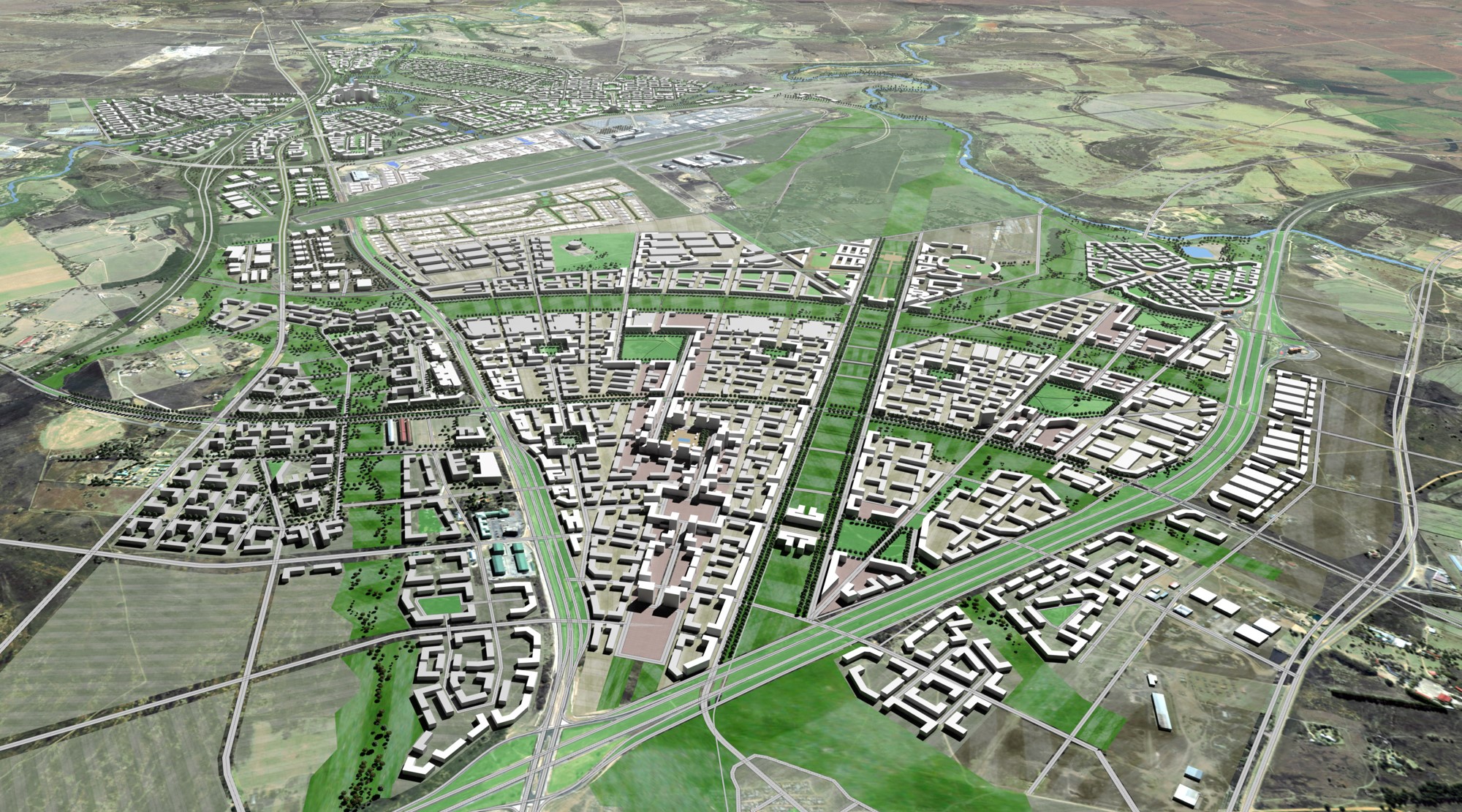
As cities are forced to rapidly adapt to the demands on existing infrastructure through increased population, urban sprawl and the informal city which is continuously being expanded; city managers must continuously balance maintaining existing services with expanding new services. This means having a holistic, integrated, dynamic and long-term approach to development is paramount.
66% of the world will live within cities by 2050
Cities are complex organisations, where operational functions work together to fulfil shared goals. Historically, each of these functions operated independently, with their own data management systems and storage protocols.
Cities have an overarching mandate to provide services to all. Services and infrastructure have significant economic benefits and are ultimately related to improving quality of life for their residents. To realise and sustain these service delivery benefits, the city constantly balances external factors such as the economy, society, and environment; and internal factors such as capacity, capability and resources in the infrastructure rollout. Performance indicators are one of the key management tools used by city management but they require reliable and accurate data to work effectively and efficiently.
Performance indicators are one of the key management tools used by city management but they require reliable and accurate data to work effectively and efficiently.
Cities are progressively generating more and more data on a daily basis. This data must be effectively processed and analysed in order to provide a status report to public and national stakeholders.
As an expert in this field, I am excited to see recent developments implemented to help integrate data within all city operations. Developments such as Platform as a Service (PaaS) allow cities to react to their needs in an agile manner.
Cities can now integrate data streams from anywhere, and we can visualise data in traditional charts, animations or GIS backed visualisations. Yet, despite the significant discussions about centralised management systems, such as enterprise service buses, the reality is that cities will continue to find new ways of managing these disparate datasets, systems, and processes.
The technology breakthroughs in collecting real-time data through sensors, (almost) universal access to internet connectivity and reduced data storage costs are exciting opportunities for cities. It is now possible to identify critical design indicators of infrastructure remotely – such as water loss from smart meters, reservoir overflows, or a customer reporting a leak using a mobile incident management system. This enables a city to implement rapid reactive or proactive maintenance which has direct benefits to its operations, its residents, and the broader environment. The vast amount of data collected will allow for the implementation of predictive maintenance on key infrastructure and services.
Monitoring is not a new concept and has been a key success factor in all areas of human development. “To measure is to know.” The need for monitoring has not changed, but the type of information that can be monitored has and will increase and become easier and cheaper to generate. This can lead to an increased risk of data overload and inefficiencies, the very opposite of what investing in these complex monitoring and management systems is striving to achieve. Cities combat such “data-geddon” through the use of functional output specifications for their monitoring systems, which define clear processes for the collection and analyses of this big data.
In the information age, the first question to ask is not only what can be monitored, but what must be monitored. Cities need to evaluate and engineer their performance management systems with performance indicators which can be monitored and make business sense. Engineered indicators are essential for the holistic and sustained performance management of a city. The second question is how to disseminate the information to internal functions to optimise city operations. One example is where the revenue department is the custodian of the customer information system, and the technical department is responsible for customer metering. Where the information is not available through a centralised platform, the city runs the risk of incorrect billing which results in a revenue loss and customer dissatisfaction with the city’s service delivery. It is important to note that data sharing between city departments requires trust and confidence between all city officials – administrative, technical, and political.
At SMEC, we understand that to optimise city operations, trust and confidence between all city officials is required. We have developed a suite of advisory services to help transform the management of cities. On one of our recent projects we identified operational gaps between city departments responsible for water service delivery, leading to increased inefficiencies and operational risks. Our team identified the management risks, roles and responsibilities within these departments and proposed appropriate key performance indicators to allow the city to allocate
Related
insights
 Connecting the dots in city operations
Connecting the dots in city operations
Cities are rapidly becoming home to more and more people in both developed and developing countries. It is projected that 66% of the world will live within cities by 2050. Africa has seen rapid urbanisation over recent decades, and this trend is expected to continue with 56% of the African population living within urban areas by 2050.
 Designing tomorrow’s sustainable cities: Lanseria Smart City
Designing tomorrow’s sustainable cities: Lanseria Smart City
The Greater Lanseria Master Plan (GLMP) is the first stage in the development of the new Smart City in Lanseria (Gauteng Province), as announced by South African President Cyril Ramaphosa in his 2020 State of the Nation Address. Following the announcement, a joint initiative led by the Gauteng Office of the Premier was formed to undertake extensive studies and engagements for the planning of Lanseria Smart City.
 70 Years Forward: Urban communities
70 Years Forward: Urban communities
Urban development has changed dramatically over the past 20 years and future transformation will continue to occur swiftly. At SMEC, we are preparing for seismic shifts in urban development practices that could potentially rewrite how we design the spaces in which we live and work.





